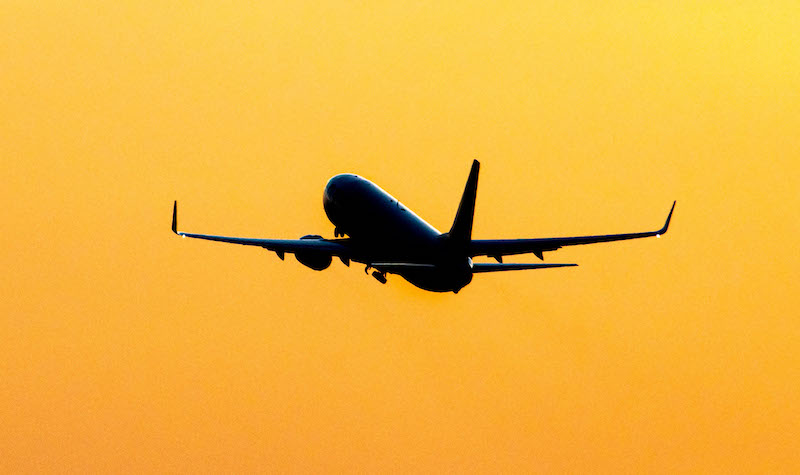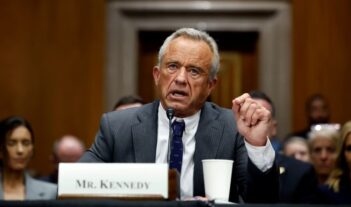
CDC orders masks on domestic flights after airlines’ self-enforced mask mandates do not yield compliance.
Airplane travelers may no longer need to fear being trapped 35,000 feet in the sky next to an unmasked stranger. The Center for Disease Control and Prevention (CDC) has ordered travelers to wear masks while using domestic transportation systems. The order follows President Joe Biden’s executive order requiring agencies to implement such a mandate.
These orders follow over nine months of federal regulatory silence on social distancing measures to protect travelers. Despite 37 statewide mask mandates, no binding regulation from the Federal Aviation Administration (FAA) or elsewhere has required airlines to enforce COVID-19 prevention measures.
Travelers frequently risk exposure to COVID-19 through airplane travel. COVID-19 spreads through respiratory droplets and aerosol particles containing the virus. Infected particles spread more easily indoors, especially in densely packed, enclosed spaces.
The U.S. Environmental Protection Agency stresses the importance of ventilation in enclosed spaces to remove toxins, pollution, and viruses from the air. The FAA requires commercial aircrafts to replace 0.55 pounds of fresh air per minute per person and reports that most commercial aircrafts use hospital-grade air filtration systems.
The high-efficiency particulate air systems used by most commercial airlines can reduce the spread of COVID-19 by removing particles traveling throughout the plane. Passengers can still spread COVID-19 on a plane, though, because filters remove particles from the cabin at a slower rate than people expel them into the air. Travelers in seats next to, in front of, and behind an infected person are at the greatest risk of contracting COVID-19, as they may encounter respiratory droplets before the filters remove them.
Behavioral changes can reduce the transmission of COVID-19 on airplanes. The CDC now requires wearing a mask and remaining at least six feet from others to prevent the spread of COVID-19 when traveling.
Airlines also tried to reduce the spread of COVID-19 by enforcing mandatory temperature tests, boarding procedures that limit direct contact between passengers, and enhanced cleaning protocols to disinfect seats and public spaces before flights.
Limiting COVID-19 exposure on airplanes plays an essential role in slowing the virus’s global spread. Air travel brings infected people to new regions, including hotspots struggling to control outbreaks and facing hospital space shortages.
The FAA regulates airline and aircraft safety measures, but FAA administrator Steve Dickson has refused to implement mask mandates or other COVID-19 prevention measures, saying that the FAA is “not a public health agency.” To date, the FAA has worked with the CDC to issue guidance for crewmember health monitoring but has not issued federal requirements for COVID-19 prevention measures.
Last year, the CDC attempted to institute a mask mandate for “all forms of public and commercial transportation.” The Trump Administration’s coronavirus task force, however, reportedly blocked the CDC’s draft order, which would have required both passengers and transportation employees to wear masks.
Instead, U.S.-based airlines developed a piecemeal self-regulatory framework. In May, many major U.S. airlines began requiring passengers to wear masks while on aircrafts. Some also detailed plans to block off middle seats to promote social distancing. Several major U.S. airlines have since abandoned their socially distant seating policies but have maintained mask-wearing requirements.
This self-regulatory scheme yielded uneven and unpredictable enforcement. FAA regulations allow airlines to penalize passengers “interfering with the duties of a crewmember,” and some airlines denied passengers their seat for refusing to wear a mask. Other passengers saw aircraft crews blatantly ignoring maskless fellow passengers.
FAA began strengthening its power to punish unruly passengers one week before President Biden’s inauguration. FAA cited “troubling incidents” of Trump supporters in connection with the D.C. riot in early January, during which passengers reportedly threatened to assault crewmembers and disobeyed their requests to wear masks. FAA announced that instead of addressing these cases with “warnings or counseling,” it would now “pursue legal enforcement action.”
Tess Wilkinson-Ryan, a professor of law and psychology at the University of Pennsylvania, has explained that people are often poor risk assessors but not chaotic decision-makers. When given structured, clear rules, people can make better, safer choices. Wilkinson-Ryan argues that, when rules are unevenly applied or confusing, people should focus on creating explicit directives from regulatory agencies, and save social shaming for passengers flouting clear rules.
One of regulation’s most vital roles is ensuring that people can use transportation infrastructure reliably. To make important decisions, such as whether to travel during a global pandemic, people must be able to know what safety precautions airlines are taking. Uneven, unenforced public health rules put passengers in unsafe, uncomfortable positions.
President Biden’s commitment to enforcing mask usage may usher in a new age of regulatory clarity. In a pandemic, regulatory strength not only helps individuals make decisions, but it can also save lives.



